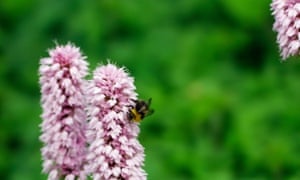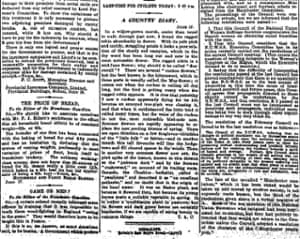
In a willow-grown marsh, easier than usual to walk through just now, I found the ragged robin abundantly in flower. With its pale pink and untidy, straggling petals it looks a poor relation of the sturdy red campion, which in the dry wood has been long out and new is the most noticeable flower. The ragged robin is a mid-June flower; why should it be called “floscuculi”? There are several “cuckoo flowers,” but the best known is the bittersweet, which in these parts is usually called the May-flower; it comes out when the cuckoo is calling all day-long, but the bird is getting weary when the ragged robin appears. It is true that yesterday I saw a cuckoo apparently flying for its life because an annoyed tree-pipit was chasing it, and that when it outdistanced the little bird it called many times, but the voice of the cuckoo is not the most noticeable bird-note now.
Summer flowers are rapidly appearing to replace the now seeding blooms of spring. There are open thimbles on a few foxgloves - thimbles of the “little folk” or fairies, - and in another month this tall favourite will line the hedgerows and fill cleared spaces in the woods. There is another very common flower now out, the pink spike of the bistort, known in this district as the “patience dock” and by the farmers “snakeweed,” on account of its trailing roots. Gerarde, the Cheshire herbalist, called it: “passhions” and described it as “an excellent potherbe,” and no doubt, that is the origin of the local name. It was an Easter plant, not because it flowered then, but because its young leaves made a suitable vegetable in spring. It is rather a troublesome plant in pastures, but its flowers and dark green leaves are certainly handsome, if we are capable of seeing beauty in common things.
